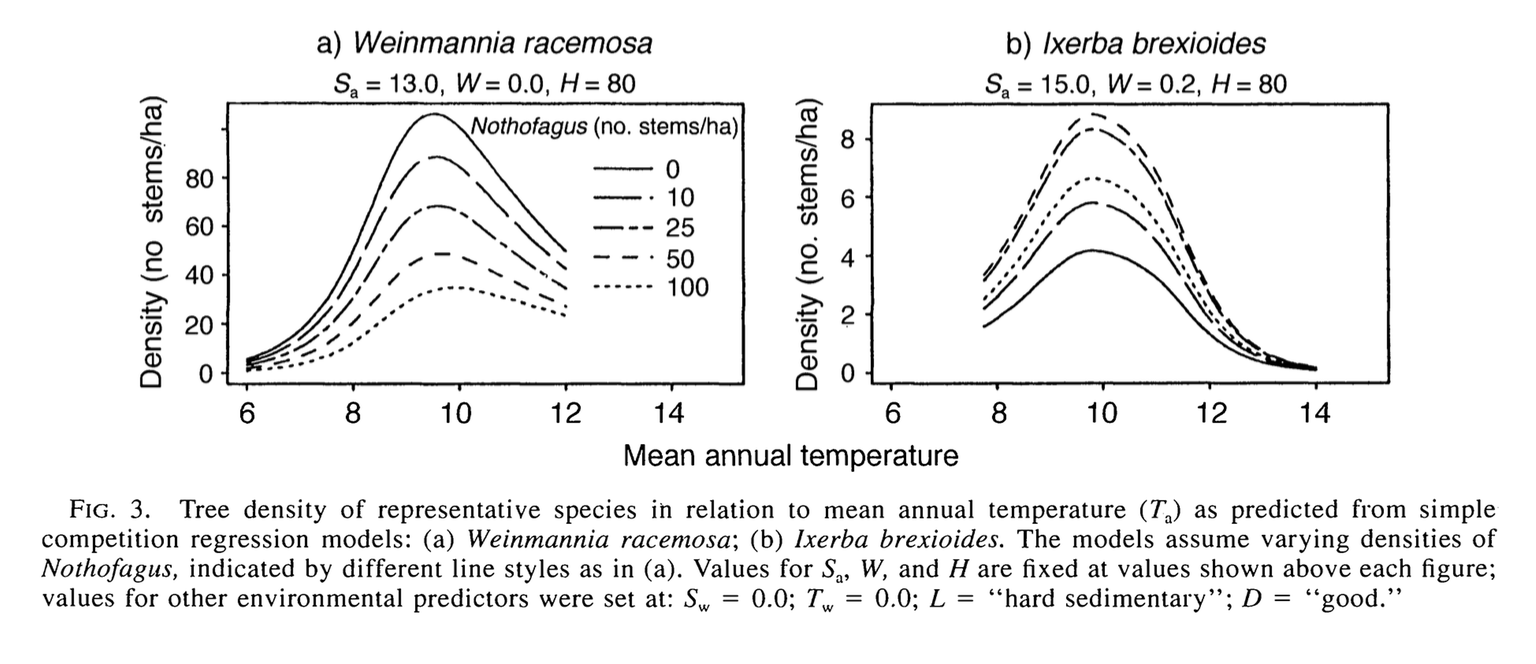Leathwick, J. R., & Austin, M. P. (2001). Competitive Interactions between Tree Species in New Zealand’s Old-Growth Indigenous Forests. Ecology, 82(9), 2560–2573. DOI: 10.2307/2679936
A major limitation of current species distribution models is the exclusion of biotic predictors and species interactions in models. It is difficult to separate the spatial patterns of species interactions and environmental covariates in a model because the distribution of non-focal species is itself dependent on environmental covariates. The Nothofagus forests of New Zealand, however, present an ideal natural experiment, because their species distribution is based on historical landscape shifts, not environmental covariates, enabling the inclusion of Nothofagus presence- absence in a model without confounding the abiotic covariates. To examine the contribution of species interactions to SDMs, Leathwick and Austin fit GAMs to New Zealand tree species, including both environmental factors and presence-absence of Nothofagus species, and the interaction between environmental variables and competition. Environmental regressions in the absence of competition were first created for each species. Terms describing Nothofagus density and an interaction between Nothofagus density and temperature were then added to the regression. A reduction in deviance due to the addition of a term was interpreted to mean that the factor did influence the focal species distribution. The addition of competition significantly reduced the deviance for all species, and did so on a larger magnitude than did the environmental covariates, except for mean temperature, suggesting that competition significantly impacts species distributions. Additionally, including competition in the SDMs led to an upwards shift in species’ optimal temperature. The authors validated their model by comparing predictions using environment-only regressions and environment-competition regressions for two data sets. The environment-competition model seemed to predict species distributions more accurately, but this accuracy was not assessed quantitatively. Leathwick and Austin’s results suggest that future SDMs must take into account more realistic species interactions, as in some cases, they influence species distributions WORD at least as much as environmental covariates. However, their reliance on reduced deviance as proof of the role of competition could be improved upon by using a more rigorous, quantitative training method. Further work exploring the interaction between competition and environmental covariates, and that competition potentially alters the thermal niche of species, should be done and would be especially relevant in the face of climate change.

